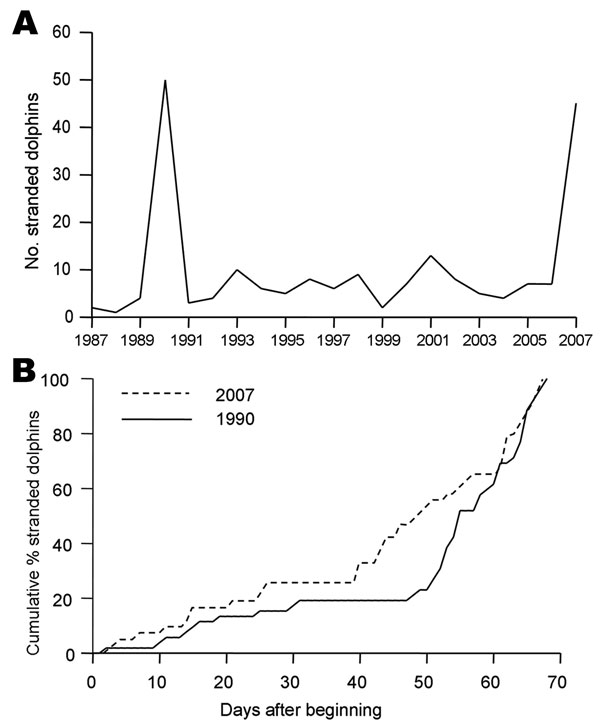Volume 14, Number 3—March 2008
Dispatch
Dolphin Morbillivirus Epizootic Resurgence, Mediterranean Sea
Figure 1

Figure 1. Stranding patterns of Mediterranean striped dolphins, Stenella coeruleoalba, in the Gulf of Valencia and adjacent waters (Valencian Community) (514 km of coastline). A) Records of S. coeruleoalba stranded in July–August each year from 1987 to 2007. Note peaks of stranding in 1990 and 2007. B) Cumulative percentages of dolphins found dead during July–August, 1990 and 2007 epizootics. Day 0 corresponds to June 23.
Page created: July 07, 2010
Page updated: July 07, 2010
Page reviewed: July 07, 2010
The conclusions, findings, and opinions expressed by authors contributing to this journal do not necessarily reflect the official position of the U.S. Department of Health and Human Services, the Public Health Service, the Centers for Disease Control and Prevention, or the authors' affiliated institutions. Use of trade names is for identification only and does not imply endorsement by any of the groups named above.